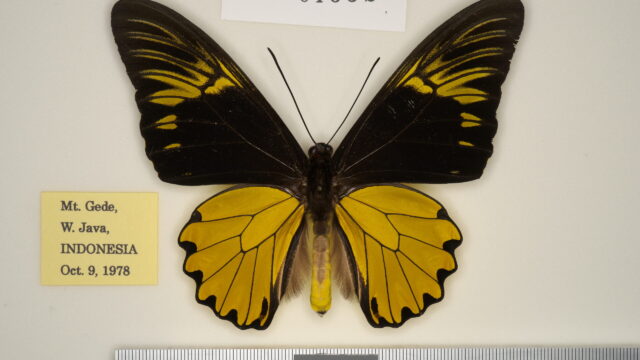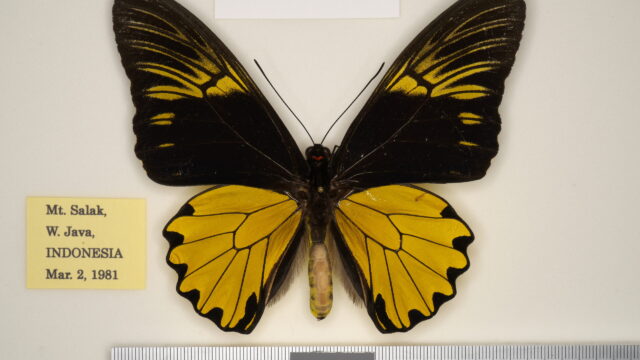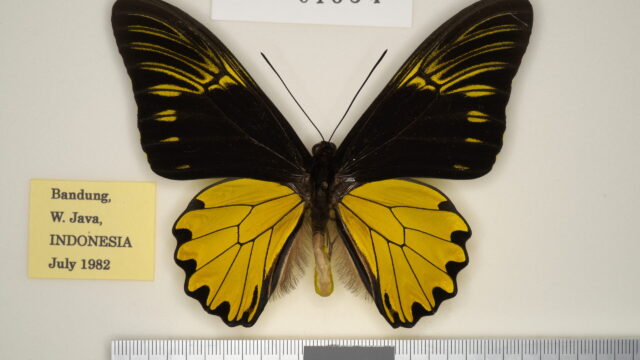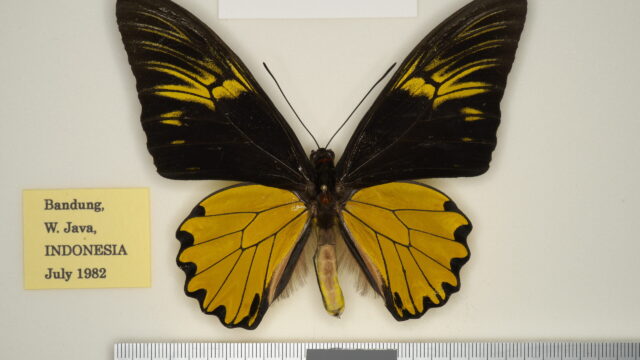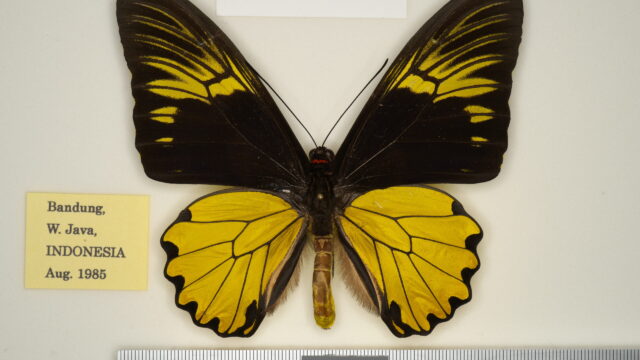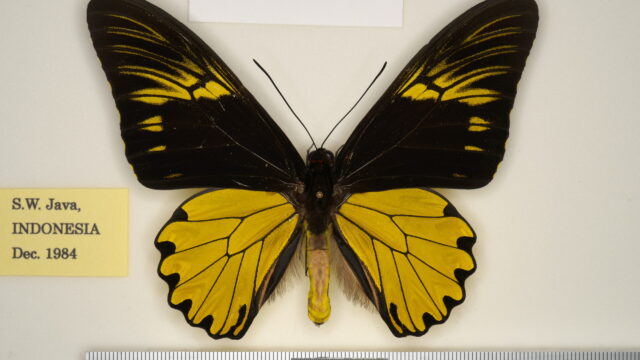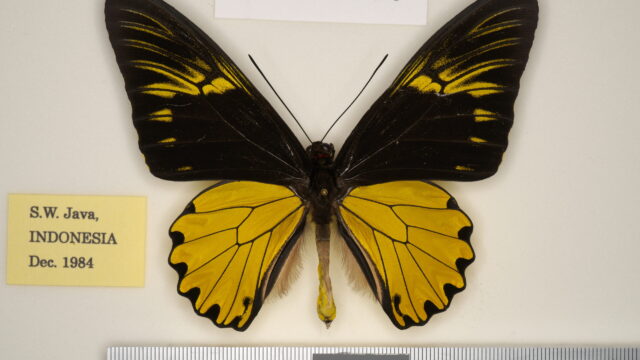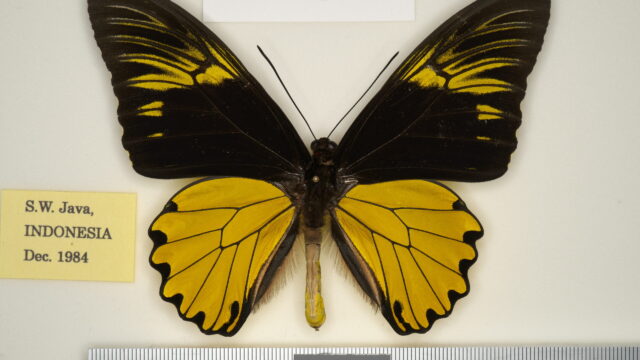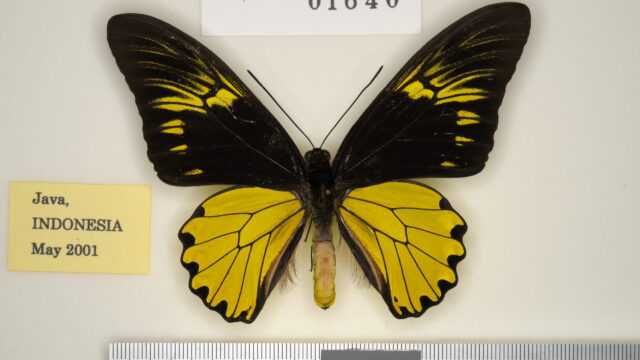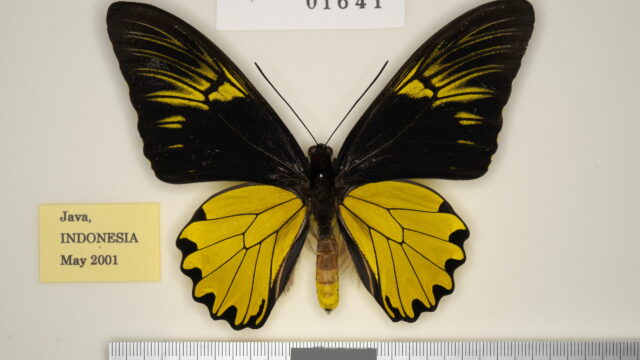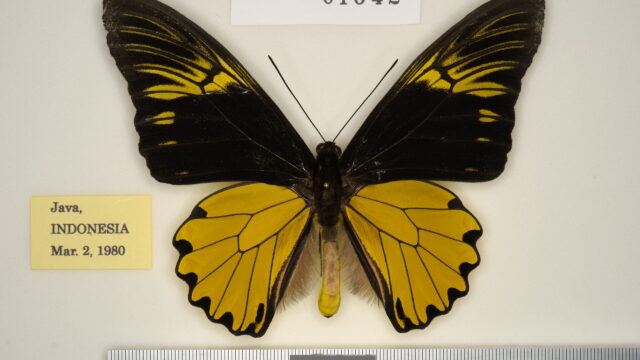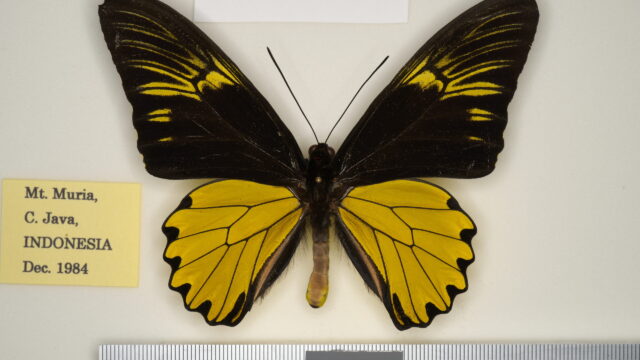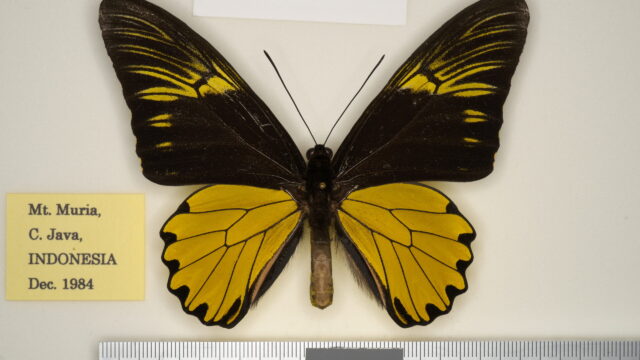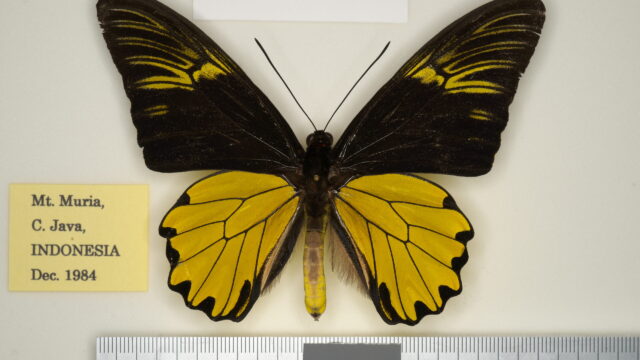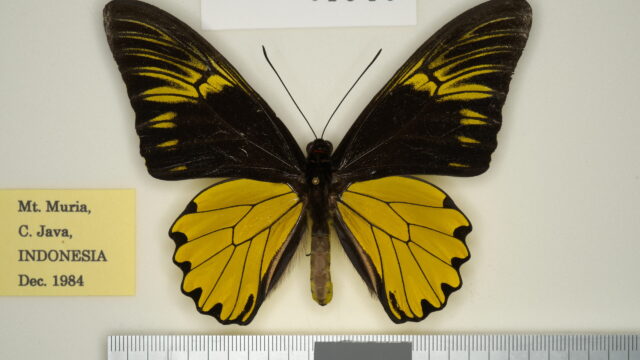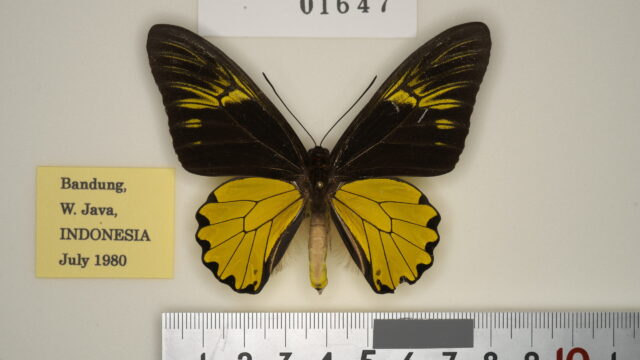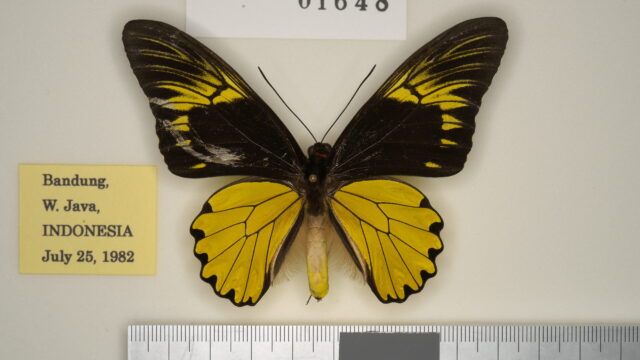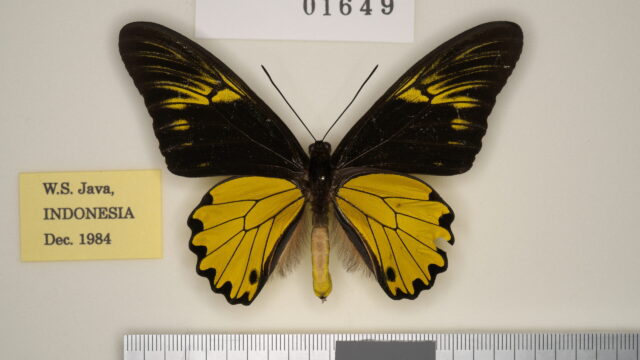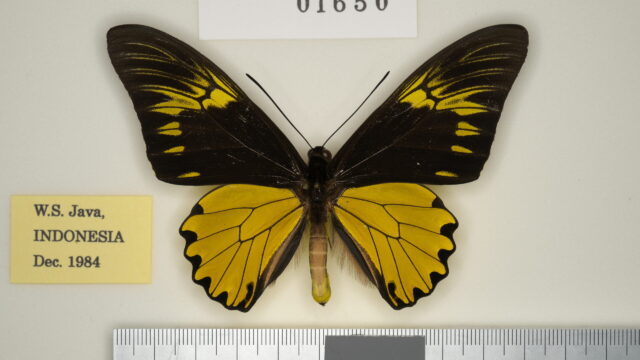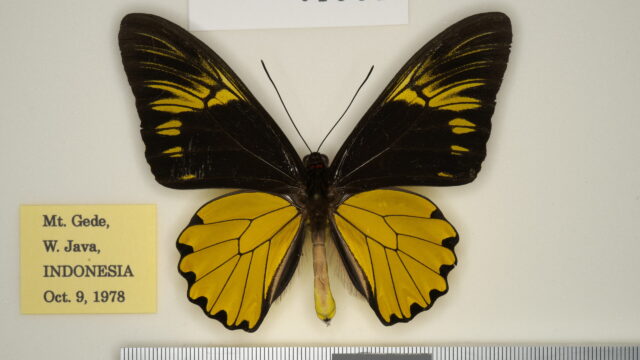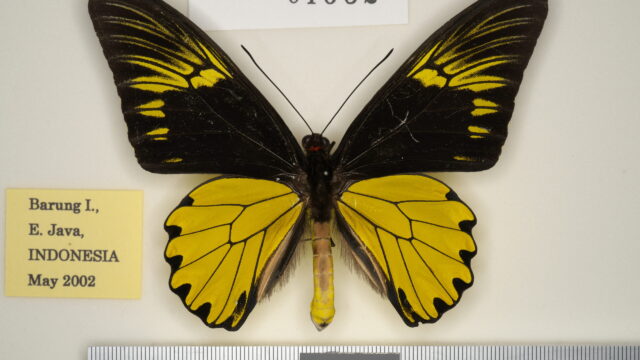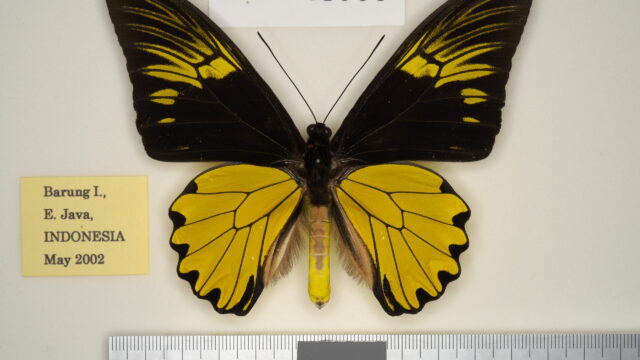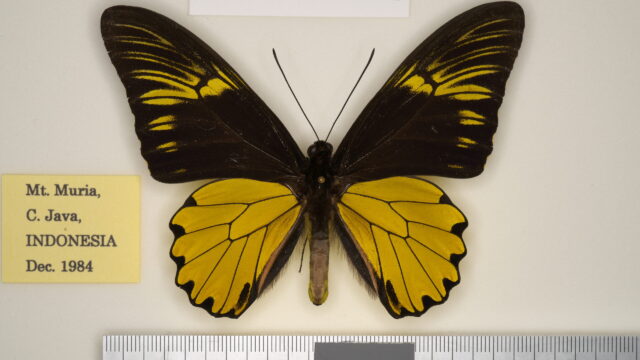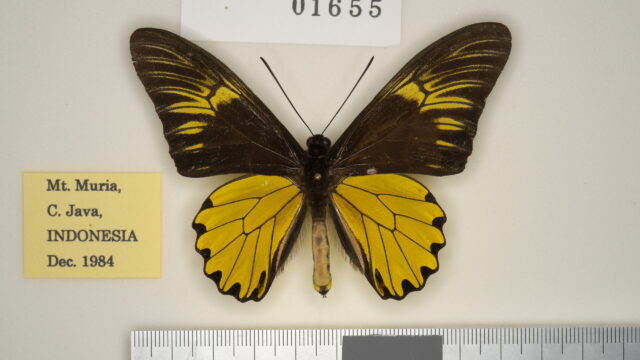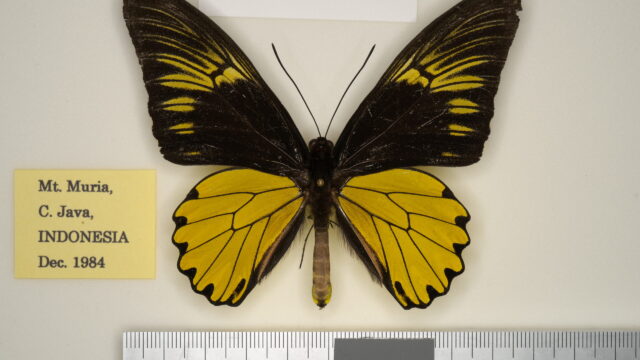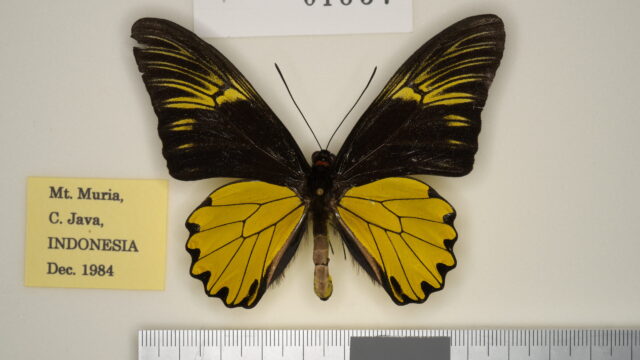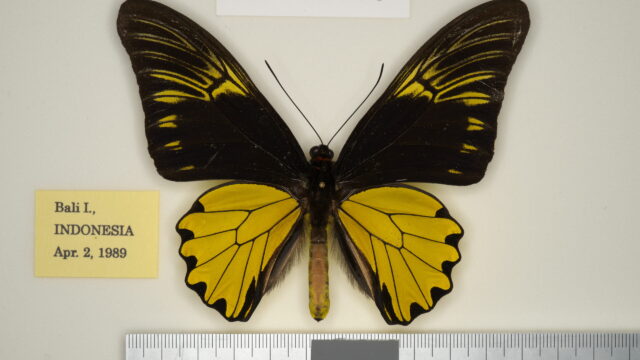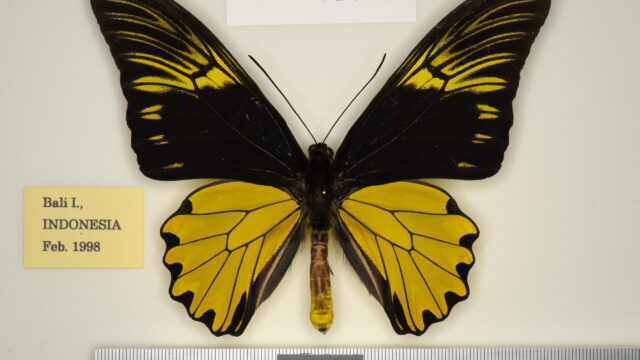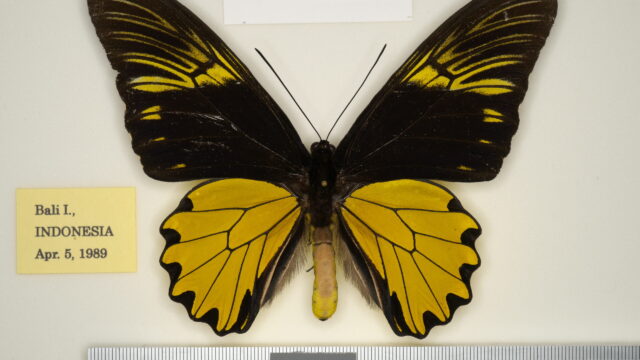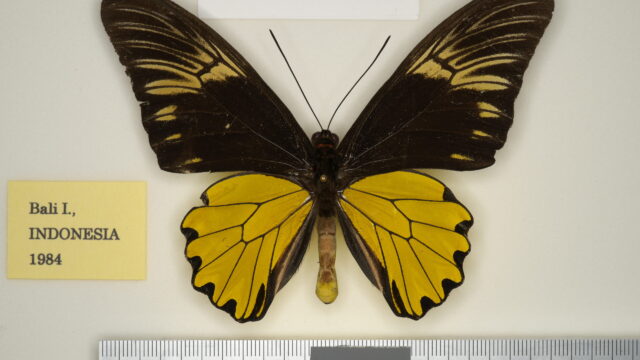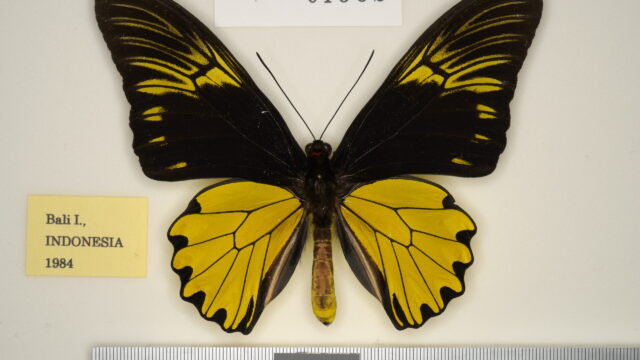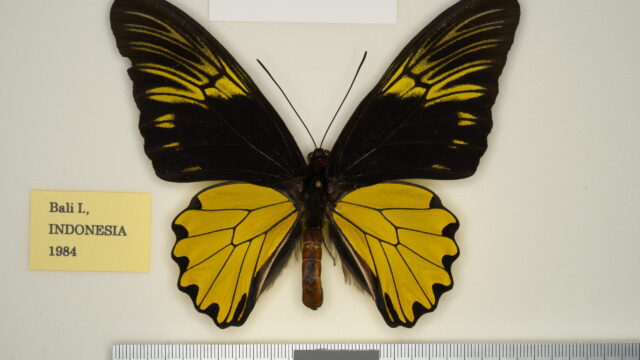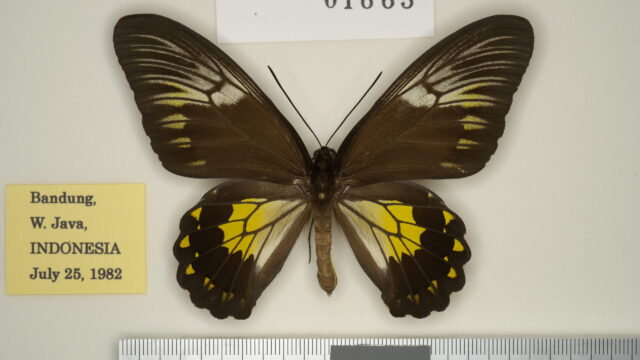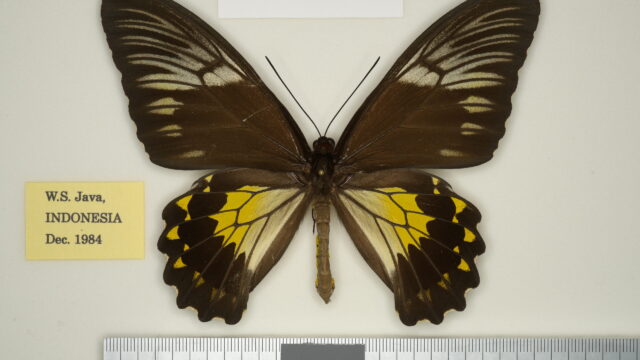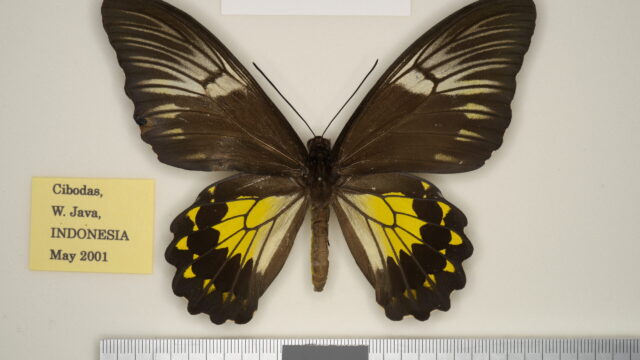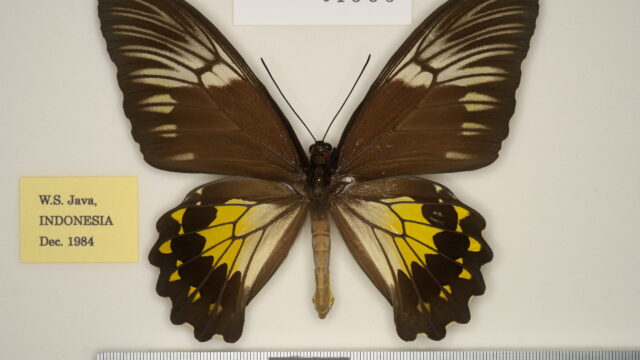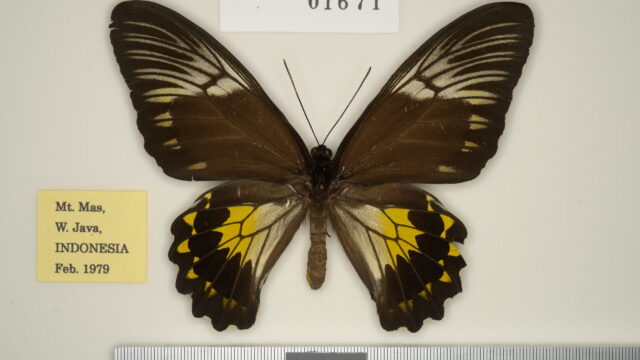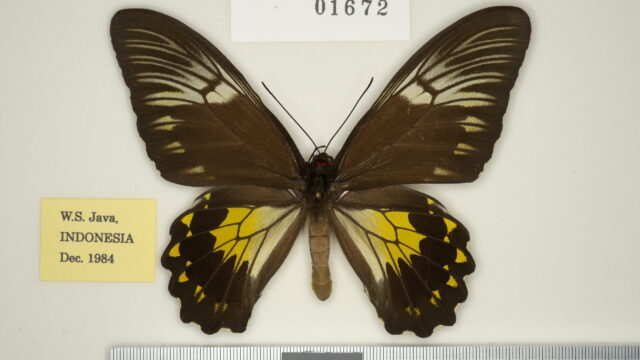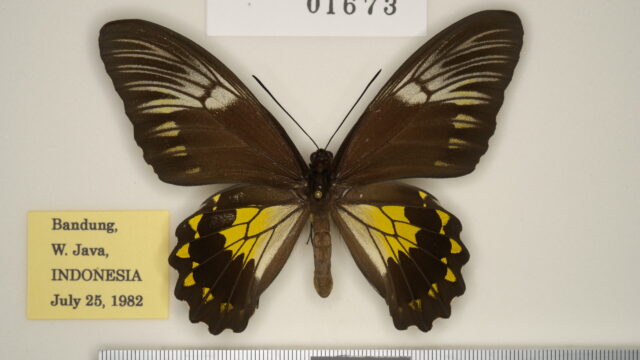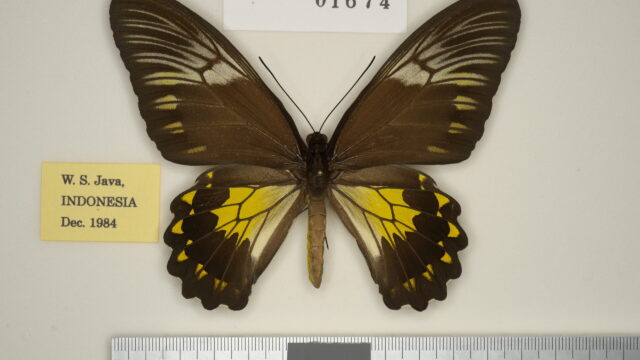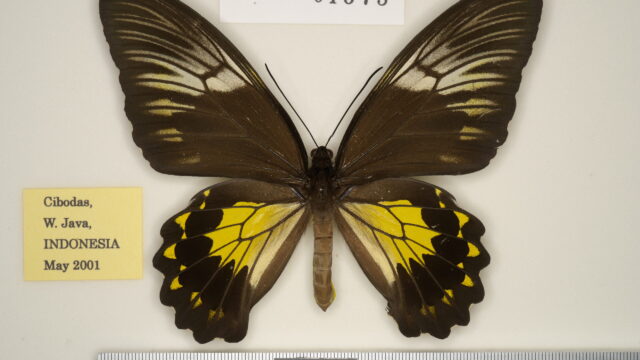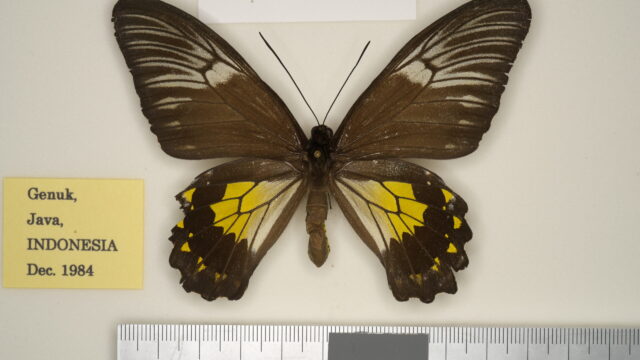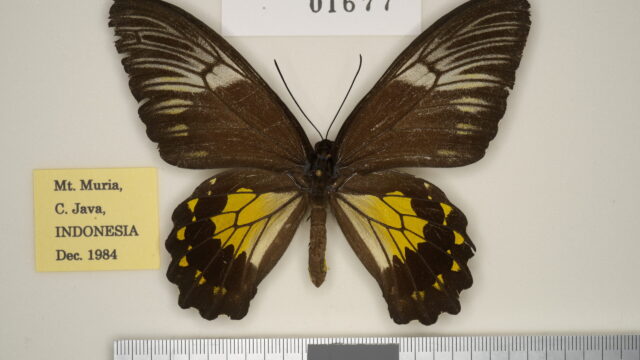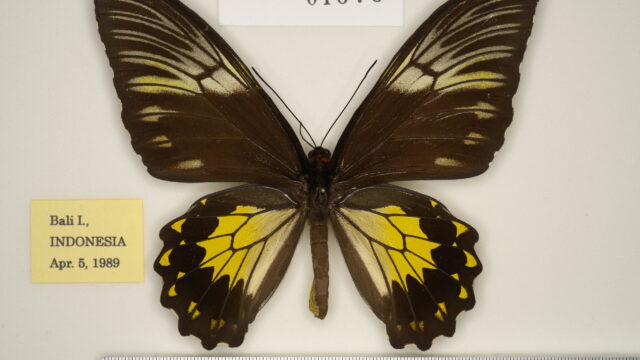- Ssp. amphrysus (Cramer, 1779)3) [♂] [♀: amphrisius, (Boisduval, 1836)1)]
= amphrisius, (Boisduval, 1836)1) [♂, ♀] (Java / Sumatra)
= joanae Parrott, 198932) [♂, ♀] (Bali Is. (Tabanan))
(Distribution) [Map 82]
INDONESIA (Java) [W. Java] Mt. Halimun, Pelabuhan Ratu area, Mt. Salak, Mt. Gede-Pangrango Nat. Park (Cibodas, Mt. Pangrango, Mt. Gede), Soreang, Bandung, Linggarjati, Pangandaran, [C. Java] Genuk, Mt. Muria, [E. Java] Surabaya, Malang, Sendangbiru, Mt. Argopuro, Barung Is., Bali Is.
(Episodes of discovery and original description)
The first description of the Javanese ♂ was given by Cramer in his large work “Papillons Exotiques,” vol. 3, p. 43, fig. 219, f. A. This work was published in four volumes, five with supplements, in 1779 and 1780. The third volume was published in 1779 and 1780. The species name amphrysus is derived from the stream Amphrysos in Phthiotis. On its banks, Apollo grazed his herd of Admetus (Greek-Roman mythology).
(Characteristics)
It is the oldest known lowland, beautiful subspecies and is easy to distinguish from other subspecies.
(Spotted pattern)
♂: The ground color of FW is black with dark blue sheen. Vein-stripes of FW are the largest of the subspecies and are bright yellow. The apical spot of the cell and V-shaped stripe in space 4 are particularly conspicuous. The black marginal border on HW is broad and black projections are moderate size.
♀: The apical spot of the cell and vein-stripes on FW are large, grayish white and conspicuous. The HW pale band is yellow, but grayish white at the base of the cell and space 1b, which is unique to this subspecies.
(Variation)
♂-f. palabuana (Fruhstorfer, 1894)8): [FW discoloration] The vein-stripes on FW are not normal bright yellow, but dark reddish brown in color.
♂-f. magnifica (Ehrmann, 1921)7): [Aberrant HW pattern] Presence of the black discal spots in the spaces of HW.
